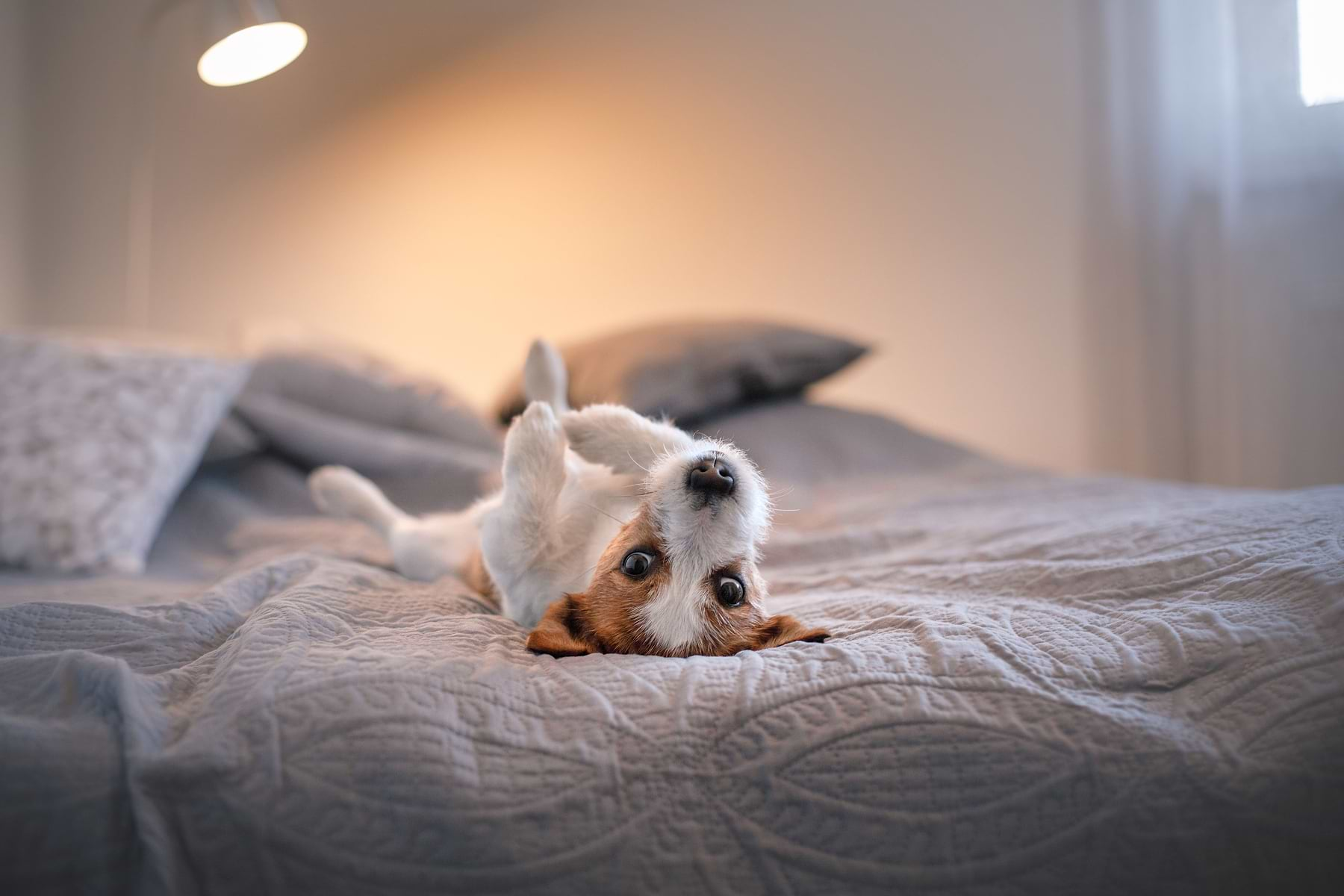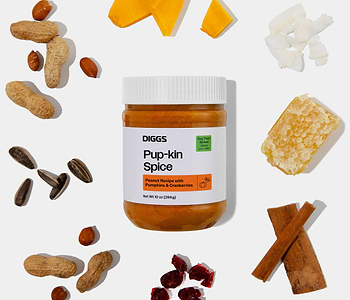There is absolutely no doubt that puppies add a great deal of joy to our lives. They are beyond adorable, their capacity for energy is inspiring, and they have so much love to give us. In return, we promise to care for them to the best of our ability. In order to give them the best life, and for the two of you to have the best possible life together, there are a few preparations that you should make.
Even with all of this preparation, there are some aspects of having a puppy that you will still have to deal with, such as how to help them calm down. While the energy that puppies harbor is incredibly cute, you will likely want some tricks in your back pocket to help them relax, especially at bedtime.
Why Do Puppies Have Trouble Calming Down at Night?
Puppies might have trouble calming down at night because they did not get enough exercise during the day, they are experiencing feelings of anxiety, or another reason entirely.
Whatever your puppy’s reason for not calming down may be, here are six helpful tips to try. When done correctly, these suggestions will aid you tremendously in helping both you and your puppy sleep.
Give Them a Space Where They Can Be Completely Relaxed
One of the most important steps that you can take to ensure that your puppy is ready to go to sleep is to see to it that they are fully relaxed.
In order to turn that dream into a reality, having a place that your puppy associates with rest and tranquility can be an invaluable tool. Many puppies and pet parents find this tool in the form of a crate.
Crates are so helpful when trying to help your puppy calm down for a few reasons. For one, it is a great idea to crate train your puppy. After they have been successfully crate trained, they will associate their crate with positive feelings including relaxation.
Another reason that crates are so beneficial for dogs of all ages is that they trigger their natural instinct to den. This makes dogs feel even more comfortable and at ease in this space.
To make a puppy’s crate even more comfortable, be sure to include items that they enjoy. For example, a soft blanket and toys that they enjoy cuddling with are sure to be welcomed additions.
It's also important to make sure you have the right crate size for your puppy. You should get a crate that will accommodate your dog at their adult size, but it is important that the space is not too large for them in their current, puppy form. If the space is too big, your puppy’s instincts to den will not be anywhere near as prominent, and it could result in some bathroom messes.
This is where a divider comes in especially handy. By placing a divider in your puppy’s crate, you can guarantee that it will be exactly the right size for your dog in all stages of life and they’ll be more likely to make it through the night comfortably.
Allow Your Puppy To Sleep Near You, if Possible
This is something that should likely be considered prior to getting a crate for your puppy if you decide to go that route. However, once you have your puppy’s perfect crate all set up, you are going to have to decide where to put it.
When you and your dog are not on the go, you are going to want to find a place where it can remain that works well for both you and your puppy.
Why Does Your Dog Want To Be Near You at Night?
You may notice that your puppy wants to be near you at night. This could come in the form of them trying to hop into bed with you if they do not have a crate. If they do have a crate but it is in a different location, you might hear whining or your dog could have some difficulty falling asleep for reasons you do not understand.
If this is the case for your dog, it is possible that they want so badly to be near you because they would otherwise experience separation anxiety. In order to ease this sense of separation anxiety in your puppy, you have a few options.
First of all, your dog will almost certainly feel more comfortable if you are within their line of sight. As a result of this, consider putting your puppy’s crate in your room with you so that they can always feel like you are close by. This principle also stands if you provide your dog with their own bed, rather than a crate.
Essentially, no matter how your dog sleeps, and on what surface, make sure that they have something soft and comfortable close to you. This will make your puppy much calmer, as they know that you are not going anywhere. In addition, you will also be at your puppy’s side much faster if they need anything over the course of the night.
Engage in Calming Interactions for an Hour Before Bed
Many humans have certain rituals or behavior that they like to engage in before bedtime. The reason for these rituals, other than to maintain our hygiene and comfort, is to gently transition us from wakefulness to rest. In essence, we all thrive off routine.
We will go in-depth on the specifics of how to establish a routine for your puppy a bit later in this article. For now, though, let’s talk about how else you can create an aura of calm for you and your dog.
Stop Playing or Doing Anything That Makes Your Dog More Excited
Puppies have nearly boundless energy, or at least it can seem that way for pet parents at times. Even if they were excited to begin with, playing with your puppy only serves to make them even more excited. While this might be a positive when trying to help your dog get their energy out during the day, this is certainly far from ideal when it is finally time for bed.
You can make sure that your puppy does not build up excitement that keeps them up at all hours of the night. During the hour or so before you both go to bed, do not play with a toy, go for an invigorating walk, play fetch, or take part in any other exciting activities. This way, you will signal to your puppy that this is a time to wind down, rather than a time to get amped up.
Do Not Feed Your Dog Right Before Going To Sleep
Although people might get extra tired after a big meal, this can have the opposite effect in dogs. More specifically, having a meal right before bedtime can result in your dog needing to go to the bathroom shortly after going to sleep. Puppies will need to go out multiple times during the night to relieve themselves anyway, but it is best to space out these visits as much as possible.
By not feeding your dog an hour or so before bed, both you and your puppy will be able to get more uninterrupted sleep. With a new puppy, uninterrupted sleep can at times seem like a luxury. Adopting this practice gives you both the best chance at success.
Pet or Massage Your Dog To Relax Them
Now that we know what not to do in the time leading up to sleep, let’s establish some of the adorable and bonding activities that you can indulge in together. By petting or massaging your dog in a calming way, you can help their muscles relax.
In order to fully calm them down, it is best to avoid any more excited petting that could make them less tired. Instead, focus on long and soft pets through their fur.
Not only will this inevitably help to make your puppy more tired in preparation for bedtime, but it is also a wonderful bonding experience for the two of you. In addition, the simple act of lovingly petting a dog has been proven to reduce stress in people.
Play Tranquil Music To Set the Right Tone
It is true that you might feel a bit silly for doing this, but it can still be a helpful practice. If you do not want to think about the fact that you are playing calming music for your dog, you can also consider it an act of self-care. After all, your dog’s bedtime rituals should be enjoyable for you as well!
Playing some calming music will set the perfect tone for upcoming rest and relaxation, for both humans and canines alike. Make sure that the music is something that you also enjoy, whether it be classical, soft rock, reggae, or any other genre. Even white noise can be a relaxing option. To make the scene even calmer, you can also include scents that your dog finds comforting.
Tire Your Puppy Out Often During the Day
Remember when we kept going on about how you do not want to get your puppy overly excited at night? Well, that idea goes out the window during the daytime.
Since puppies are so naturally boisterous and energetic, it stands to reason that they would need a lot of exercise to tire them out. That being said, sufficiently tiring your puppy out during the day is one of your greatest tools for helping them sleep at night.
If a dog has not gotten enough exercise during the day, then this deficit will likely manifest as them running around, or having the “zoomies” at night. Essentially, a puppy’s energy has to get out one way or another.
You definitely want that energy to be used in a productive and fun way during waking hours. Luckily, there are a variety of ways that you can get exercise with your puppy that will have them snoozing peacefully long into the night.
Take Them on Walks That Are Exciting, but Not Too Stimulating
Any pet parent will tell you that walking your dog is a must. A walk is a lovely time for both dog and human to experience the world together, thus strengthening their bond.
However, there are important health benefits surrounding daily walks as well. Taking your puppy outside provides an opportunity for them to burn some energy and have some mental stimulation, but it is also integral to potty training them effectively.
With all of that in mind, you should also remember not to take your dog out too much, or give them an excessive amount of exercise during the day. In fact, it is possible that when puppies exercise too much, it could be detrimental to them in the future. Not only are there possibly negative long-term effects, but a dog who is too overtired could act out at night, rather than be calmer.
There is not an exact formula to determine how much exercise your puppy should get. However, there are a few ways that you can make it much clearer as to what your puppy likely needs. Be sure to consider their breed, size, age, and energy level, as all of these factors will likely help to clarify the situation significantly.
Play Some of Your Puppy’s Favorite Games
Other than taking your dog out on daily walks, it is fair to assume that your puppy loves to play a game or two. See if your dog especially enjoys anything from classics to fetch or tug of war to more creative games that involve their favorite toys.
Playing these games gives you an opportunity to help your puppy burn off some excess energy even when you cannot go outside together.
Take Your Puppy Out To Use the Bathroom Right Before Bed
Though we touched on this topic just a little bit earlier, it certainly bears repeating. Right before you and your puppy head to bed for the night, it is crucial that you make a trip outside one of your last activities. Your puppy will need to go outside in the night multiple times depending on their age, but this potty break will help both of you immensely.
The general rule is that puppies will have to use the bathroom every one hour for every month of their lives so far. For example, a two-month-old puppy will need a bathroom break every two hours, a four-month-old puppy for four hours, and so on. These exact numbers can vary depending on your dog’s breed, size, and other factors, but this is a helpful rule of thumb to follow.
In order to make sure that your puppy stays calm overnight, make sure to take them out to use the bathroom whenever they need it. Many pet parents find it helpful to set occasional timers during the night at the different times that your puppy is likely to need a trip outside.
Have a Consistent Daytime and Nighttime Routine
At last, we return to just how important it is for your puppy to have a routine that they can follow. A routine will help keep your dog happy and healthy, as well as instill a sense of security and confidence in them. The act of establishing and following a routine will send your puppy a clear message of how they should be feeling.
During the day, they will understand that they should be ready to play and live life to the fullest. At night, however, a routine that consists of winding down will help them feel relaxed.
What Should a Puppy’s Daytime Routine Look Like?
The activities involved in a puppy’s daytime routine will likely vary somewhat depending on both the dog and the pet parent. However, there are certain rituals that are nearly universal.
When first waking up, you and your dog should go outside so that they can go to the bathroom. This will help to potty train them because it continues to build on the association that they should only go when they are outside.
Then, it is likely time for some kind of breakfast. Over the course of the day, going on walks, taking your dog out to the bathroom, a nap, and playtime should all be priorities. A thorough and complete daytime routine will help set the stage for an effective nighttime routine.
What Should a Puppy’s Nighttime Routine Look Like?
After the excitement of the day, both you and your puppy are probably ready to get some high-quality rest. You can help this process along by following a bedtime routine.
We mentioned a few of the ways that you could help prepare your puppy for sleep earlier, but just to recap:
- Do not do anything to excite your dog
- Stop feeding them an hour before bedtime
- Cuddle, pet, or massage your dog to help calm them down
- Play relaxing music
- Take them out to use the bathroom last thing before settling down to sleep
A Good Night’s Sleep for Everyone
Even when your puppy is experiencing bouts of hyperactivity, keeping these tips in mind will help the path to a calm night become much clearer. A good night’s sleep for you and your puppy is not just about bedtime, but also involves your dog’s healthy routines and a safe, secure sleeping space.
A dog crate is one of the best training tools available to help your puppy learn to calm down at night or any time of day. Plus, dog crates are also one of the few ways to ensure your fur baby is safe through the night, in the same way a crib keeps a human baby safe.
Inspired by the safety and quality standards of the baby product industry, we created our Revol Dog Crate to be the perfect blend of safety, durability, functionality, and aesthetic appeal for pets and pet parents alike.
Made with the modern pet parent in mind, the Revol Dog Crate:
- is ergonomically designed and easily collapsible with one hand for storage and transportation;
- is designed to feel open even when closed, thanks to the special diamond-shaped mesh pattern for the walls and roof;
- is built to last with durable yet lightweight materials that are so safe, they meet FDA safety standards for food use;
- is available in spacious sizes designed to the maximum size accommodations;
- comes with a puppy divider so your crate can grow with your fur baby;
- is safe and secure enough for even the most precocious pup;
- and has specially-designed accessories available to make your dog's crate truly feel like home.
Sources:
The Friend Who Keeps You Young | Johns Hopkins Medicine
Puppies: How Much Exercise Is Too Much? | American Kennel Club

The Diggs Team
We believe our dogs deserve safer, better designed pet products.
You might also like
Crate training tips, stories and inspiration
View all blogsIn Your Diggs
Share your photos with #DiggsPet and tag us @DiggsPet on IG and TikTok.





